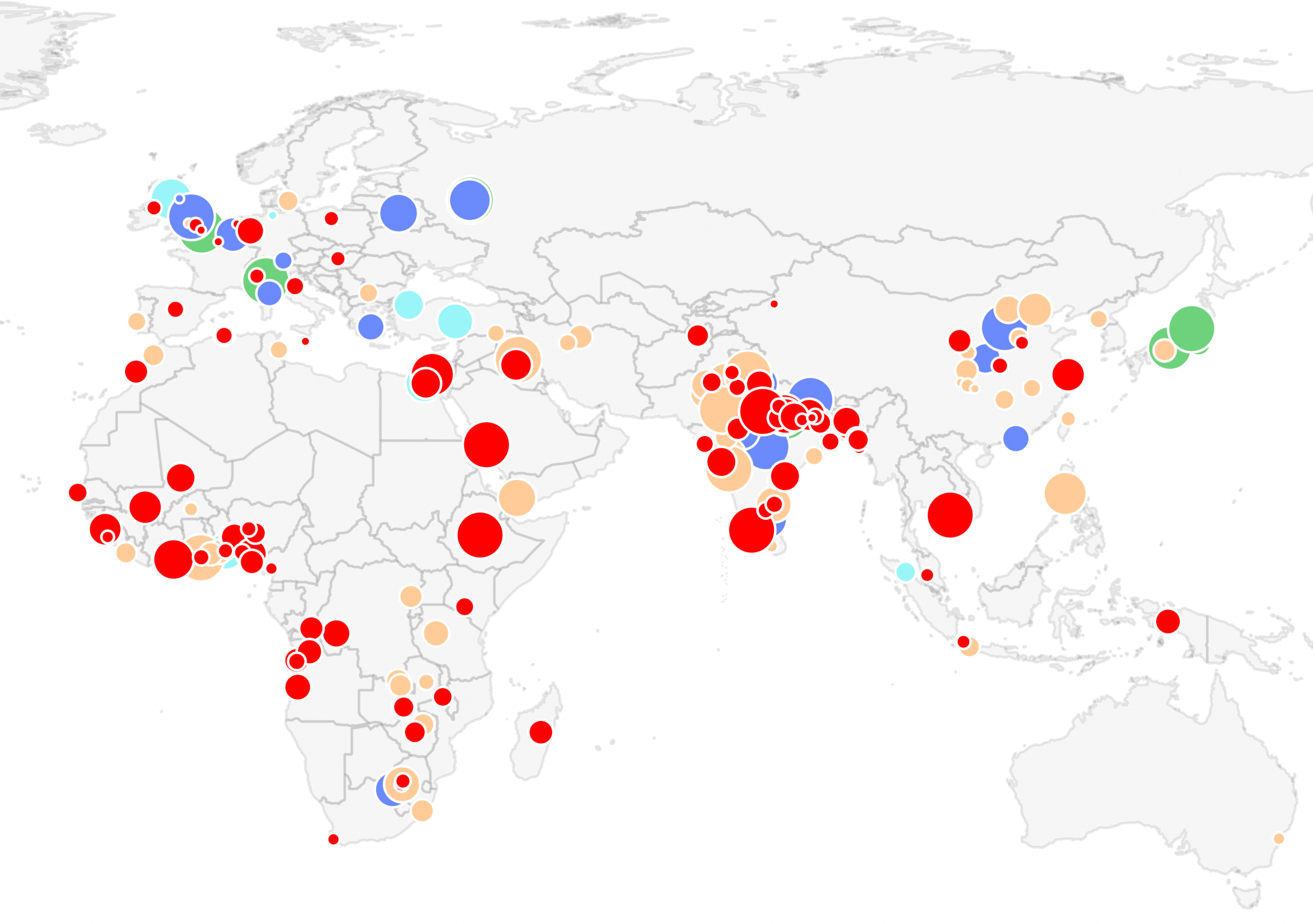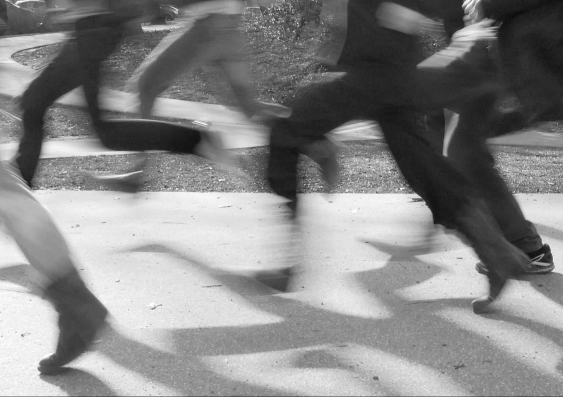UNSW crowd safety expert says everybody involved in large open-air events - including fans and the artists, as well as the organisers - needs to be alert to potential danger.
A crowd safety expert has called on concert-goers to be vigilant and aware of the dangers during major outdoor events.
Taylor Swift will soon be playing three concerts at the MCG in Melbourne, before heading to Sydney for four gigs at the Accor Stadium as part of her Eras Tour.
Around 100,000-110,000 fans are expected to pack into the stadiums for each concert, potentially breaking Ed Sheeranâs record for the highest-ever attendance at a ticketed music show in Australia.
But with the huge numbers of devoted fans congregating together also comes an element of risk, especially for events held in open-air stadiums.
In November,  at one of Swiftâs outdoor concerts in Rio de Janeiro. Local media reported that Ana Clara Benevides Machado fainted at the Nilton Santos Olympic Stadium, before later passing away due to a cardiac arrest.
Daytime temperatures had risen above 39 degrees Celsius, and some concert-goers posted messages on social media claiming they were not allowed to bring their own water bottles into the stadium.
For popular concerts such as Swiftâs, fans are known to queue up for eight hours or more before the gates open â often in exposed conditions â in order to get the best position at the front of the standing area closest to the stage.
Media enquiries
For enquiries about this story and interview requests, please contact Neil Martin, News & Content Coordinator.
Email: n.martin@unsw.edu.au
And UNSW crowd safety expert Dr Milad Haghani says people attending such popular outdoor events need to be properly educated about the potential dangers.
âAs part of very general crowd safety measures, we can talk about individual people in the crowd being part of the risk assessment,â Dr Haghani, from the School of Civil and Environmental Engineering, said.
âIf we give them some key information and make them involved in the process then not only are they doing their own individual risk assessments, but they are also part of the collective effort to minimise any risks.
âEducation should include information on how to recognise and respond to health emergencies, such as heatstroke or dehydration, which are common in large, densely packed crowds, especially in hot weather.
âI strongly advise all event organisers to put out such information on a wide range of channels, including social media and screens at the event itself, to help promote that safety culture.â
The NSW governmentâs  states that âDrinking water must be made available free of charge to patronsâ, and adds that âThe safety management plan must include provisions for sufficient water available to patrons for drinking, hygiene and cooling purposes, as well as an overview of signage indicating where free water is located.â
Both the  and the  in Sydney allow water to be brought into the stadium in soft plastic bottles, with numerous bubblers for free refills located throughout the venues.
âCrowd safety in Australia as a whole is very advanced and we have some of the best practices in the world, so I definitely donât want to sound alarmist,â adds Dr Haghani.
âThe risks are likely very minimal, but I still advocate for vigilance, for people in a crowd to stay aware of what is happening around them and be able to assess the risk â and then properly act on it if they need to.â
Rarity can increase risk-takingÂ
Dr Haghani urges anyone with sought-after tickets to popular concerts, such as those for Taylor Swift in Melbourne and Sydney, not to ignore crowd safety risks for fear of missing out on a once-in-a-lifetime opportunity.
The Eras Tour is only the sixth time Swift has performed concerts in Australia â and the first for five-and-a-half years since the Reputation Tour in 2018.
Most of the approximate 500,000 tickets for the Melbourne and Sydney shows  when they went on sale last June, with more than 4 million fans reportedly logging on to try to buy them.
That means the lucky few who were successful will be keen to get the best view and the best experience â but hopefully not at the expense of safety.
âFor these popular events I have no doubt that rarity can play a factor in terms of risk assessment,â says Dr Haghani.
âIf you are a Taylor Swift fan in California, for example, then you probably think there are going to be a few concerts over the next year or so that you could go to.
âBut if you are in Brazil, or Russia, or Australia, then it could well be many years before it happens again in your country and who knows if you would able to buy tickets again because they are so hard to get.
âWhen fans are presented with this amazing opportunity they are willing to camp out for many hours, or even days, and maybe take bigger risks in terms of their own safety.â
Another factor can also be the age of the people within the crowd itself, which is potentially of significance at Swiftâs concerts which often attract a large number of tween and teenage fans.
âWe see age being a factor in road safety outcomes, so it absolutely does play a part,â says Dr Haghani.
âYoung people are much more prone to risk-taking and also perhaps do not have the same level of knowledge about risk assessment, such as those which exist while being in large crowds.
âItâs understandable that if they go to a music concert they want to see the artist close-up and have the best experience they possibly can, but we hope that it does not come at the expense of safety.â
More generally, Dr Haghani says event organisers for concerts held outside or in open-air stadiums need to consider all the possible risks from weather and the elements and instigate solutions to mitigate for the risks.
âI collect a lot of data about incidents where large crowds are involved and for outdoor concerts there are many different issues that can occur.
âThere have been cases where parts of the stadium or equipment has collapsed due to heavy rain, or in a heatwave there can be exposed metal which causes burns, and even a  that reportedly hospitalised seven people.
âIt is the organiser and the venueâs responsibility to conduct regular safety audits to ensure that temporary structures, such as stages and barriers, are designed to withstand extreme weather conditions.
âIn addition, they should be closely monitoring weather patterns and be prepared to adapt plans accordingly - including the possibility of pausing, delaying, or even cancelling events based on weather conditions.
âOrganisers can and should employ a range of other strategies, including the use of advanced infrared cameras to monitor temperature variations within crowds, as well as misting showers or high-pressure air bursts around stages in cases of extreme heat.
âThey should also ensure the availability of advanced pre-hospital care for medical emergencies and establish clear procedures for pausing or stopping shows if emergencies do occur.â
Music artists can be safety wardens
Dr Haghani has praised Taylor Swift for her actions during the show in Rio de Janeiro when she  to request water for a group of fans who indicated they needed it.
The show scheduled for the following night was then postponed due to the extreme temperatures, with another Swift concert in Buenos Aires, Argentina, having previously been .
âThe artists on stage also have a role to play in crowd safety and Taylor Swift is a prime example of someone who I think really tries to take care of her fans,â the UNSW academic said.
âI would advise all artists to become educated about crowd behaviour and be involved in the pre-event safety briefings and understand what the likely risks might be, because up on stage they can maybe see things going on and be able to intervene.â
Related stories
-

Summer festival season is hotting up - it's time to take care
-

Travelling overseas? This map shows the hot spot areas for deadly crowd accidents
-

Planning to use drugs at a festival on a scorching day? Hereâs why extreme heat might make MDMA riskier
-

How learning to be a 'zero responder' can help save lives in an emergency





